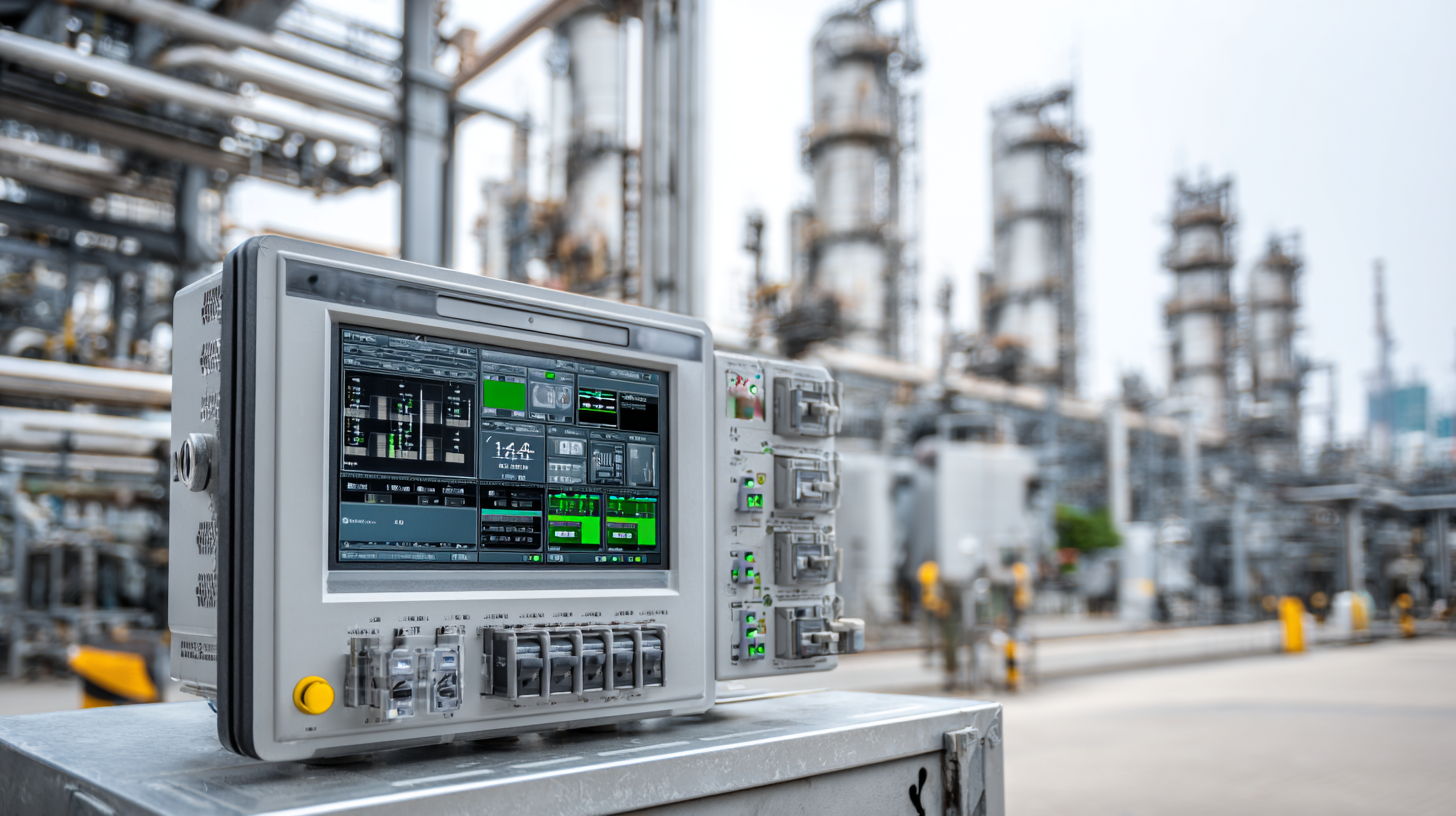As we approach 2025, the landscape of Industrial Control Systems (ICS) is rapidly evolving due to emerging technologies that promise to enhance efficiency, security, and scalability across various industries.
 The integration of advanced tools such as artificial intelligence, the Internet of Things, and cloud computing is not just a trend but a necessity for businesses seeking to remain competitive. These technologies offer significant benefits, including real-time data analysis, improved predictive maintenance, and automated decision-making processes that enhance operational efficiency.
The integration of advanced tools such as artificial intelligence, the Internet of Things, and cloud computing is not just a trend but a necessity for businesses seeking to remain competitive. These technologies offer significant benefits, including real-time data analysis, improved predictive maintenance, and automated decision-making processes that enhance operational efficiency.
In this blog, we will explore the essential implementation checklist for these technologies, ensuring that industries harness their full potential in transforming traditional control systems into smart, responsive frameworks. By understanding the benefits and strategic application of these innovations, organizations can effectively position themselves for future success in the industrial landscape.
The landscape of industrial control systems is set to witness significant transformations by 2025, driven by emerging technologies like AI and smart manufacturing. As companies look to optimize their operations, the integration of these innovations will be crucial. The recent exploration of Germany's industrial forefront emphasizes the importance of adopting cutting-edge solutions to enhance manufacturing processes. Despite economic fluctuations, the focus remains on leveraging technology to create robust systems that can adapt to changing demands.
Tips: When considering implementation, it's essential to develop a comprehensive checklist that covers essential areas such as system compatibility, cybersecurity measures, and employee training. Investing in education and training for your workforce can facilitate smooth transitions to new technologies, ensuring that staff are equipped to handle advanced systems efficiently. Regular assessments of technological advancements will also help in staying ahead in a competitive market.
As we approach 2025, embracing IoT and AI in industrial control systems will not only streamline operations but also open doors to unprecedented levels of efficiency. The potential of edge computing to enhance responsiveness and reduce latency is a trend that organizations should explore seriously. Establishing strategic partnerships can further foster innovation and ensure that companies can leverage the best practices in industrial automation.
Emerging technologies are set to redefine industrial automation in 2025, emphasizing the critical need for businesses to adapt to stay competitive. The service robot market is projected to grow significantly, from $26.35 billion in 2025 to $90.9 billion by 2032, exhibiting a compound annual growth rate of 19.2%. This remarkable expansion highlights the increasing integration of robotics in industrial processes, especially within sectors like consumer electronics and electric vehicles, which adapt to the demands of a digitized environment.
Moreover, innovations in artificial intelligence are emerging as pivotal drivers in industrial settings. AI capabilities are expected to revolutionize operations by enhancing decision-making and automating routine tasks. With the upcoming industrial expositions, such as the one in Wuhan, companies will have the chance to witness firsthand the advancements in automation technologies that will shape the future landscape. The introduction of products like touch sensors and simulation software further underscores the trend towards intelligent manufacturing solutions, making it imperative for organizations to embrace these technologies in their production lines to thrive in 2025.
| Technology | Description | Key Benefits | Implementation Challenges | Future Outlook |
|---|---|---|---|---|
| AI and Machine Learning | Enhanced data analysis and decision-making through predictive analytics. | Increased efficiency, proactive maintenance, and reduced downtime. | Data quality issues and the need for skilled personnel. | Expected to drive significant advancements in automation. |
| Internet of Things (IoT) | Interconnecting devices for real-time monitoring and control. | Improved asset utilization and operational visibility. | Security and interoperability challenges. | Growth in IoT devices expected to enhance system integration. |
| Edge Computing | Processing data closer to the source for faster insights. | Reduced latency and bandwidth costs. | Implementation complexity and need for new skills. | Will play a vital role in real-time data processing. |
| Blockchain Technology | Decentralized ledger technology for secure transactions. | Enhanced security and traceability in supply chains. | Scalability and regulatory concerns. | Growing interest in application within various industries. |
| Digital Twins | Virtual representation of physical assets for simulation. | Better planning and predictive maintenance capabilities. | Data integration from multiple sources. | Expected to enhance operational resilience significantly. |
As we approach the implementation of next-gen industrial control systems by 2025, several critical challenges can hinder progress. One prominent issue is the integration of advanced technologies like AI and IoT into existing infrastructures. Many industries rely on legacy systems that are not readily adaptable to modern solutions, leading to fragmentation and inefficiencies. Addressing these upgrade requirements is essential to ensure compatibility and operational continuity.
Another significant challenge lies in the regulatory landscape surrounding emerging technologies. Industries must navigate a complex array of policies that can vary widely across regions. Ensuring compliance while still fostering innovation can be daunting. Additionally, as the urgency for sustainable practices grows, organizations face the dual challenge of meeting environmental standards while adopting cutting-edge technologies. This necessitates a strategic approach to align technological advancements with regulatory frameworks and sustainability goals, promoting an efficient and compliant implementation process.

As industries gear up for 2025, the integration of emerging technologies into industrial control systems is becoming increasingly vital. To successfully adopt these innovations, a well-structured implementation checklist is essential. Begin by assessing your current systems and identifying potential gaps where new technologies could improve efficiency, safety, or reliability. This evaluation will create a strong foundation for understanding the specific technologies that will benefit your operations.
One crucial tip for a successful transition is to foster an environment of continuous learning and adaptation. Engage your team in training sessions focused on both the new technologies and the methodologies for integrating them. This will not only enhance technical skills but also promote a culture that embraces change. Additionally, establish a dedicated task force to oversee the implementation process, ensuring that projects remain on track and aligned with business objectives.
Finally, prioritize security measures when integrating emerging technologies. As connectivity increases, so do the risks associated with cyber threats. Incorporate robust cybersecurity protocols from the outset and conduct regular risk assessments. By doing so, you will safeguard your operations and ensure a smoother transition to a more advanced industrial control landscape.

The integration of emerging technologies into industrial control systems has proven to be transformative for various sectors. Case studies from leading companies reveal that adopting advanced solutions like IoT (Internet of Things) and AI (Artificial Intelligence) significantly enhances operational efficiency and decision-making processes. For instance, a manufacturing plant that implemented predictive maintenance using AI reduced downtime by 30%, showcasing how data-driven strategies can lead to impactful results.
When considering the implementation of new technologies, companies should adopt a structured approach. One effective tip is to start with a pilot program that allows for testing in a controlled environment before full-scale deployment. This makes it easier to identify potential challenges and gauge the effectiveness of the technology. Additionally, fostering collaboration among multidisciplinary teams ensures diverse perspectives are considered, ultimately paving the way for more robust solutions.
Moreover, continuous training and upskilling of employees are essential for successful technology integration. By investing in workforce development, organizations equip their teams with the necessary tools and knowledge to adapt to new technologies swiftly. This proactive approach not only mitigates resistance to change but also empowers employees to leverage new systems effectively, reinforcing a culture of innovation within the organization.
